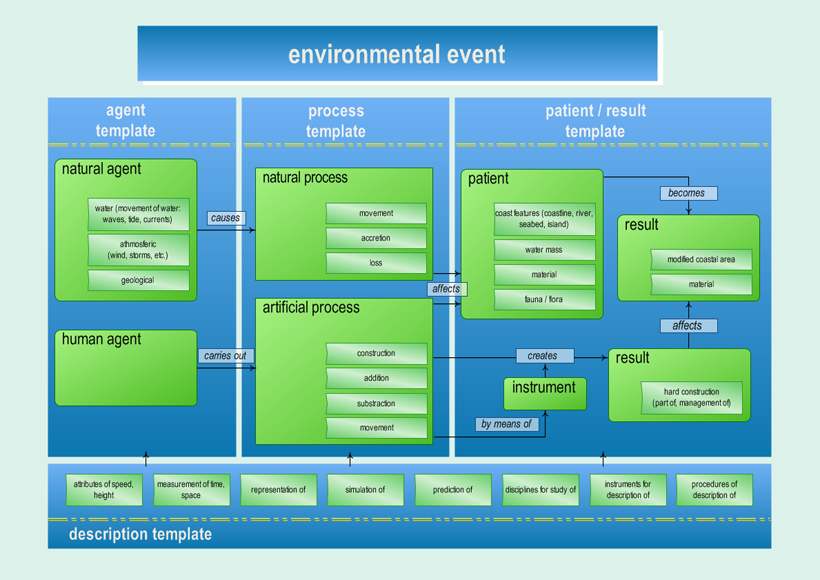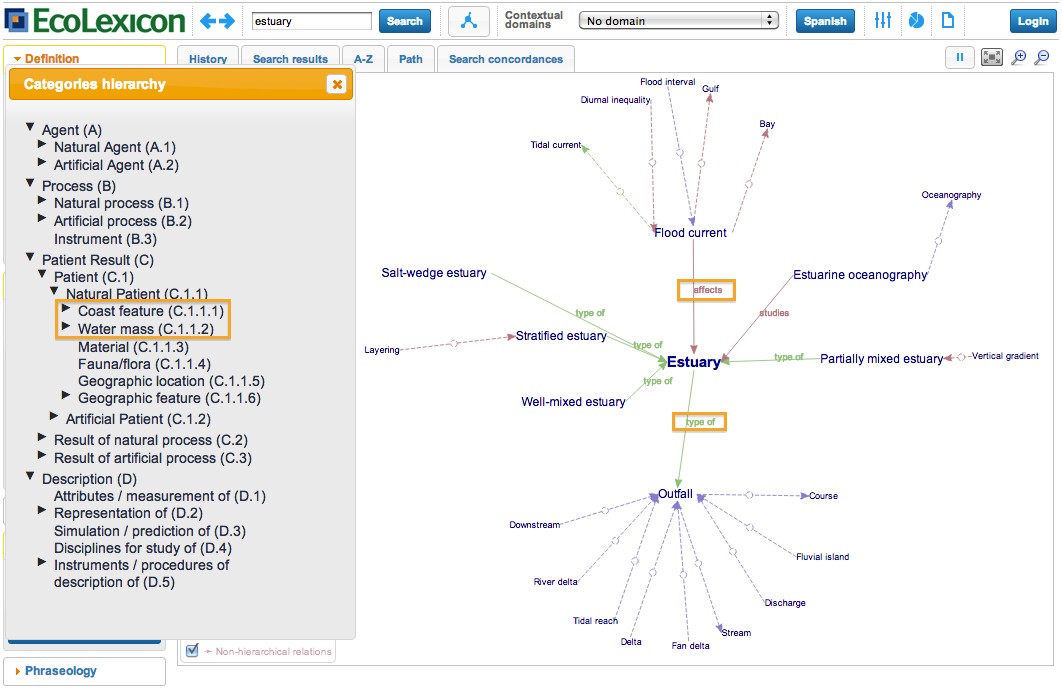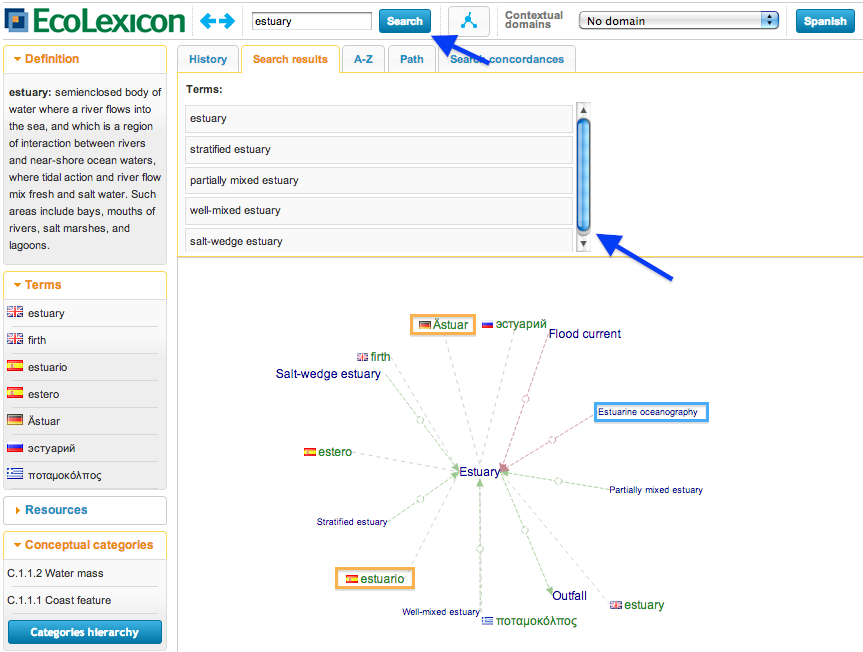
ECOLEXICON is a multilingual terminological knowledge base (TKB) on the environment. The knowledge base was initially implemented in Spanish, English and German. Currently, three more languages are being added: Modern Greek, Russian and Dutch. So far it has 3,547 concepts and 18,875 terms. It targets different user groups, such as translators, technical writers, environmental experts, etc., who wish to expand their knowledge of the environment for the purpose of text comprehension or generation. These users can freely access EcoLexicon and are able to find the information needed, thanks to a user-friendly visual interface with different modules for conceptual, linguistic, and graphical data. The main and ultimate goal of EcoLexicon is user knowledge acquisition, which can only be achieved if TKBs account for the natural dynamism of knowledge mainly caused by context and multidimensionality.
The content in EcoLexicon is organized in such a way that it goes from very general to more specific levels. The most generic level is the Environmental Event (EE), which provides a frame for the organization of all concepts in the knowledge base.

The EE is conceptualized as a dynamic process that is initiated by an agent (either natural or human). This process affects a patient(an environmental entity) and produces a result. These categories (agent, process, patient, etc.) are the concept roles characteristic of this specialized domain. Additionally, there are peripheral categories which inlcude instruments that are typically used during the EE, as well as a category where concepts of measurement, analysis and description of the processes in the main event are included. This event-based representation facilitates knowledge acquisition in text processing since conceptual categories are bound together by event knowledge.
Based on this structure, the user can access more specific levels of knowledge. The relations in the event (affects, causes, etc.) reflect the dynamic nature of the superordinate categories though the conceptual representation of this domain is not limited to the development of taxonomic hierarchies, but highlight the multidimensional nature of specialized concepts. More specifically, concept representation is enriched by the principled application of an inventory of domain-specific conceptual relations as well as by the possibility of the recontextualization of categories.
As a result, concepts can belong to more than one category or subcategory within the environmental event. For example, a beach can belong to the category of patient as well as result since it suffers the impact of natural agents and also is the result of processes initiated by agents. Concepts are also interrelated at more specific levels, by means of hierarchical relations (generic-specific and part_whole) as well as non-hierarchical relations (function, location, composition, etc.), many of which are domain-specific. These interrelations are reflected in the conceptual network.

Besides showing the conceptual organization underlying the area, this application also can be used as a monolingual and multilingual dictionary. In other words, searches can be performed by concept (in English or Spanish) as well as by term (in Engilsh, Spanish, German and other languages soon to be added). If the user enters a search term in any of the languages, he/she will obtain a network made up of the first level of representation associated with the concept and the terms that designate it. When the pointer is placed on a concept, its definition appear, and when the user clicks on any of the concepts in the network, a new concept system appears at various levels.
The application also can perform searches by approximation. In the case that the network obtained does not correspond to the original search word, it is possible to consult the search results, which contains options that most resemble the search term.

There are three sections to the left of each conceptual network:
(1) Terms. This box contains all of the terms that designate each concept in all of the languages included in the database. When the user clicks on a term, a box appears with the morphosyntactic information related to the term (part of speech, term type, gender) and contextual information (contexts and concordances). This information complements the definition and the graphical representations, and provides phraseological information associated with the term.
(2) Resources.This box includes the resources, such as images, that represent or further explain the concept, which are in consonance with the information contained in the definition.
(3) Conceptual categories. This box contains the list of domains and subdomains in the Environmental Event to which each concept belongs.

